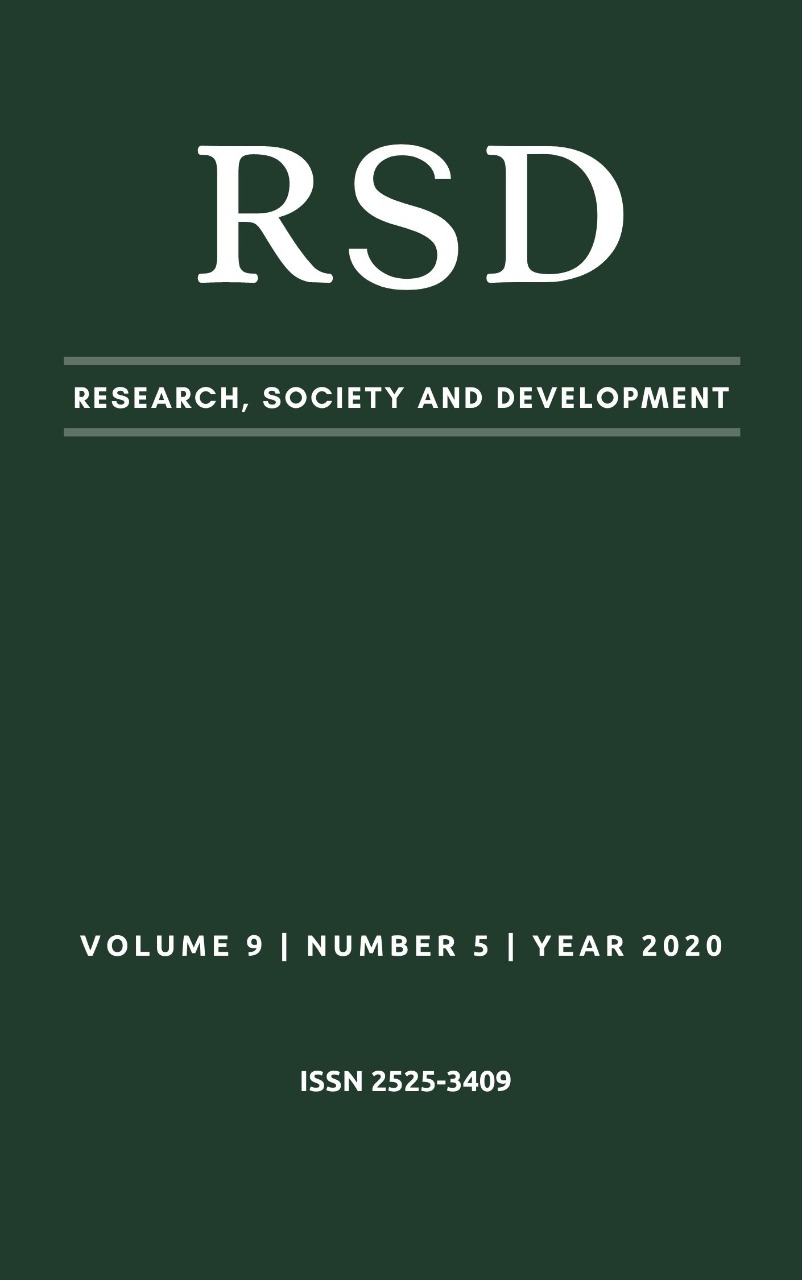Curso Popular Preparatório para o Exame Nacional do Ensino Médio: um meio de Inclusão Social em Itabira
DOI:
https://doi.org/10.33448/rsd-v9i5.2849Palavras-chave:
Curso popular, ENEM, Unifei, PET.Resumo
Este trabalho é um estudo de caso no qual analisa-se o curso popular preparatório para a realização do Exame Nacional de Ensino Médio - ENEM, da Universidade Federal de Itajubá (Unifei) - Campus Avançado de Itabira, implantado no ano de 2011 como um projeto de extensão. Desde 2014 o grupo do Programa de Educação Tutorial/PET Conexão de Saberes em Física em Popularização da Ciência colabora e faz a gestão do curso. Todo ano são oferecidas gratuitamente aulas presenciais com material didático visando preparar alunos e egressos do Ensino Médio para a realização do ENEM. O objetivo deste trabalho é apresentar a estatística de aprovação de participantes do curso na Unifei/Itabira. A metodologia utilizada é a de estudo de caso quantitativo por meio do qual foi estabelecida uma relação entre inscritos e aprovados em uma das nove Engenharias em Itabira, durante os anos de 2014 a 2018. Os resultados mostram uma taxa de aprovação entre de 25 a 40%. A oferta do curso facilita o acesso da comunidade itabirana à universidade pública e auxilia o desenvolvimento extensionista e pedagógico dos discentes da própria Unifei. Além disso, contribui para uma exposição positiva da Universidade perante a sociedade. O projeto é, portanto, de grande importância para a comunidade como ferramenta de inclusão social.
Referências
Alvarenga, C. F., Sales, A. P., Costa, A. D. da, Costa, M. D. da, Veroneze, R. B., & Santos, T. L. B. (2012). Desafios no ensino superior para estudantes de escola pública: um estudo na UFLA. Rpca, 6(1), 55–71.
Alves Machado, P. H., & Lima, E. G. dos S. (2014). O ENEM no contexto das políticas para o Ensino Médio. Perspectiva, 32(1), 355. https://doi.org/10.5007/2175-795x.2014v32n1p355
Andrade, C. Y. de. (2012). Acesso ao ensino superior no Brasil: Equidade e desigualdade social. Ensino Superior UNICAMP, 406, 1–9. Retrieved from http://www.revistaensinosuperior.gr.unicamp.br/artigos/acesso-ao-ensino-superior-no-brasil-equidade-e-desigualdade-social
Castro, M. H. G. de. (2000). Sistemas nacionais de avaliação e de informações educacionais. São Paulo Em Perspectiva, 14(1), 121–128. https://doi.org/10.1590/s0102-88392000000100014
Corbucci, P. (2014). Evolução do Acesso de Jovens à Educação Superior no Brasil. Discussion Papers.
Carvalho, M. M., & Waltenberg, F. D. (2015). Desigualdade de oportunidades no acesso ao ensino superior no Brasil: Uma comparação entre 2003 E 2013. Economia Aplicada, 19(2), 369–396. https://doi.org/10.1590/1413-8050/ea124777
Helene, O. (2019). Jornal da Usp. Ensino Superior Público e Seu Financiamento Em Alguns Países. Retrieved from https://jornal.usp.br/artigos/ensino-superior-publico-e-seu-financiamento-em-algum-paises/
Inep. (2019). Censo de Educação Superior 2018. Retrieved from http:http://inep.gov.br/censo-da-educacao-superior
Lang, F., Cristina, M., Barbosa, B., & Silva, R. (2015). Exame Nacional do Ensino Médio ( ENEM ): Uma análise crítica, 1101, 1–5.
Sebrae. (2014). Identidade dos Municípios Mineiros - Itabira. Retrieved from https://www.sebraemg.com.br/atendimento/bibliotecadigital/documento/diagnostico/identidade-dos-municipios-mineiros---itabira
Whitaker, D. C. A. (2010). Da “invenção” do vestibular aos cursinhos populares: Um desafio para a Orientação Profissional. Revista Brasileira de Orientação Profissional, 11(2), 289–297.
Zago, N. (2008). Cursos pré-vestibulares populares : limites e perspectivas, 149–174.
Downloads
Publicado
Edição
Seção
Licença
Autores que publicam nesta revista concordam com os seguintes termos:
1) Autores mantém os direitos autorais e concedem à revista o direito de primeira publicação, com o trabalho simultaneamente licenciado sob a Licença Creative Commons Attribution que permite o compartilhamento do trabalho com reconhecimento da autoria e publicação inicial nesta revista.
2) Autores têm autorização para assumir contratos adicionais separadamente, para distribuição não-exclusiva da versão do trabalho publicada nesta revista (ex.: publicar em repositório institucional ou como capítulo de livro), com reconhecimento de autoria e publicação inicial nesta revista.
3) Autores têm permissão e são estimulados a publicar e distribuir seu trabalho online (ex.: em repositórios institucionais ou na sua página pessoal) a qualquer ponto antes ou durante o processo editorial, já que isso pode gerar alterações produtivas, bem como aumentar o impacto e a citação do trabalho publicado.


